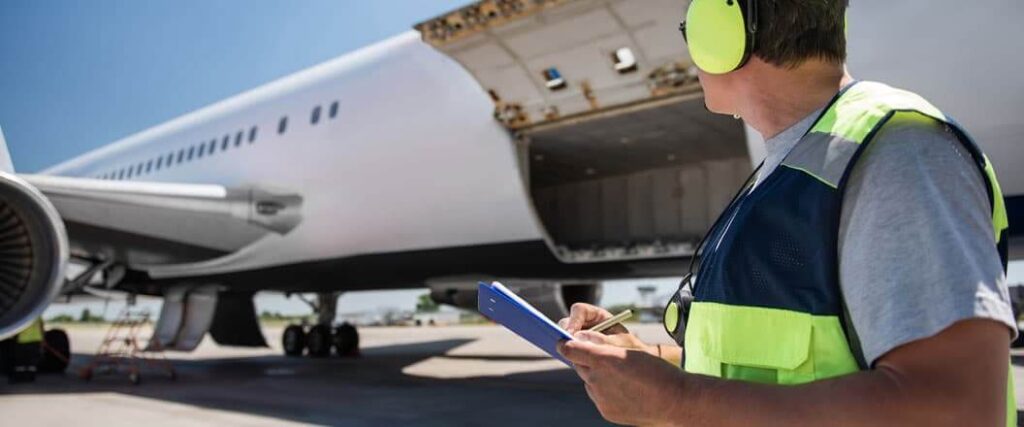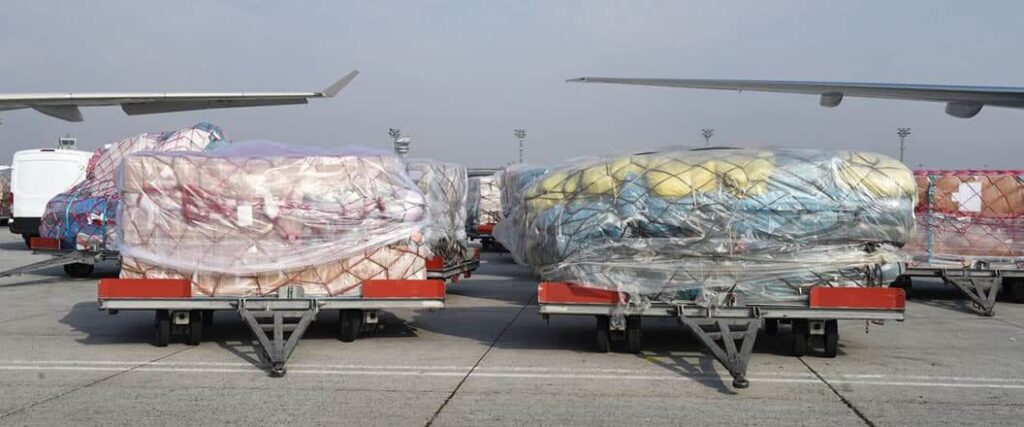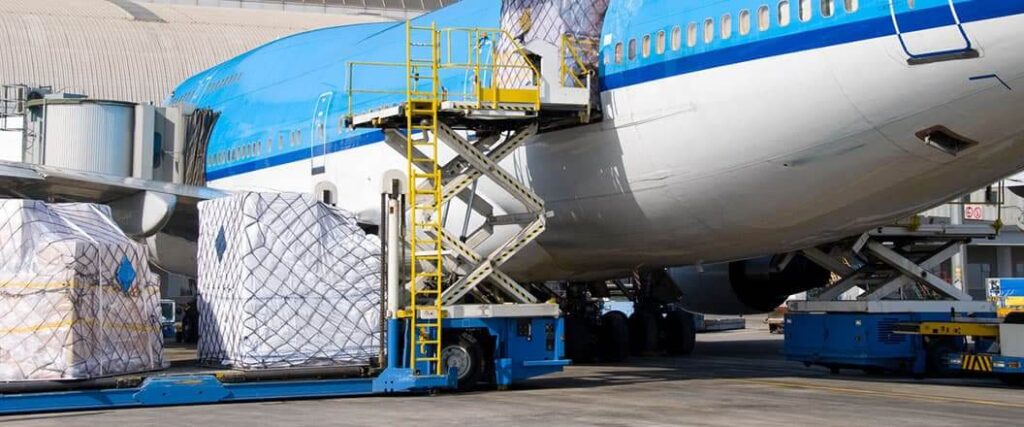TSA air cargo screening plays a large role in the world of air freight. It affects goods that are shipped across international borders as well as domestically. These security measures safeguard global aviation, but they also increase the complexity of air transport logistics.
The Transportation Security Administration (TSA) expects all air cargo, regardless of type, to undergo comprehensive security screening. This includes cargo on both passenger and dedicated freight airlines. It involves the use of advanced technology and inspection processes to detect and prevent the transport of prohibited items.
We’ll walk you through some of the TSA’s current requirements and what changes you can expect in the near future.

As far as government organizations go, the TSA is still relatively young. It was established through the passing of the Aviation and Transportation Security Act in November 2001.
This was just two months after terrorists used commercial airplanes to attack the World Trade Center Buildings in New York City. At its core, the TSA was established with the goal of putting security measures in place that would prevent such tragedies in the future.
The TSA cargo screening measures are intended to prevent any malicious products from endangering passengers and aircraft crews.
To that end, the TSA was quick to establish various security measures. For clarity, we’ll focus more on the steps that impact air freight more directly.
Security measures include:
Of course, these initial measures have been refined over the last decades. As the air freight industry grows, these regulations are and will continue to change in response.
| Year | Expanded Requirements |
| 2004 | Establishment of the Certified Cargo Screening Program (CCSP) |
| 2007 | 100% screening mandated on all passenger aircraft |
| 2014 | All air cargo must be screened for radioactive materials |
| 2021 | 100% screening mandated for goods traveling on all-cargo aircraft |
Some of these advances have been triggered by further threats. Others have been in response to safety mandates and customs requirements in other countries.
Organizations such as the European Union (EU) have been ramping up their own security measures. This includes how they expect incoming cargo to have been screened. In order to continue expanding international exports and a growing air freight sector, the TSA will continue to expand its screening requirements.
The creation of the TSA came on the heels of one of the darkest moments in U.S. history. As mentioned, it was established with a very specific goal in mind.
A few decades later and we’ve realized that there are many other benefits to having secure cargo screening procedures in place. It has also come to play an important role in international customs, exporting, and domestic shipping.
Exporters shipping outside the U.S. benefit from:
At the end of the day, air cargo screening is a legal necessity. Those can be a pain, but the benefits to international business make it worth the effort.
When the TSA established the 100% screening requirement for anything traveling by air, there was a bit of confusion as to what that actually meant. The TSA’s definition of 100% screening currently states that cargo must be screened to the same security level that passenger-checked baggage is subject to.
Considering the wide variety of inspection processes that passenger luggage goes through, plenty of shippers were hoping for more exact standards. This is where air cargo logistics providers end up struggling. Aircraft and air cargo inspections are seen as a matter of national security; as such, the exact security processes are not made public knowledge.
Is it a physical inspection? Does it need to be done by machines or by hand? What level of technology is acceptable in the process?
We do have a general idea of some technology and methods commonly used by the TSA and certified TSA facilities.
To meet the current 100% screening requirement for both passenger and all-cargo aircraft, the following methods have been used:
As technology advances and the variety of cargo that travels by air continues to grow, more methods and systems are being adopted.
Despite how essential it is, screening every single air cargo shipment is not without challenges. The scale and diversity of air cargo, coupled with technological and logistical difficulties, make complete screening an uphill task.
Since the establishment of the TSA, such challenges have been managed in stages. With each new amendment, certain exemptions have been allowed.
Freight that has been allowed to by-pass the 100% screening requirement includes:
Even assuming that the cargo that is allowed to by-pass the screening can do so, that still leaves an enormous amount of standard cargo to screen.
The growth of air shipping means that millions of packages are crisscrossing the globe on a daily basis. That’s millions of items that need to be screened.
From a logistics standpoint, TSA air cargo screening is weighted down by:
None of these things are impossible to overcome. Considering the relatively short-time span, the TSA has actually done an impressive job of enforcing screening as much as it has.
They have had some help in that area, however, in the form of amendments and alternative screening techniques. We’ll get into those next.

Earlier, we discussed what 100% screening looked like. We’ve also established that actually getting everything on an airplane screened to such levels is a massive job.
This brings us to the next point: alternatives and loopholes to total screening. Since we can’t always provide a firm answer on what 100% screening entails, providing alternatives is also challenging.
At the moment, alternative screening may take the following forms:
The exact alternative you may be able to take advantage of will depend on other factors, including the nature of your cargo. If your cargo has been labeled as impractical to screen, these amendments have been the common workaround that allows the goods to keep flying.
If you want to know more, or have questions about whether your products may get flagged during screening, speak with an IAC logistics company directly or the expert consultants here at Cargo Export USA. You’ll gain access to experienced exporters with more immediate knowledge of TSA screening requirements.
To navigate screening regulations, it’s paramount to keep track of any updates from the TSA. This is especially important if you regularly ship cargo that may fall into the ITS cargo category.
For each new screening requirement that the TSA has implemented, a number of different amendments are attached.
Coming up, we’ll review the next major changes coming to air cargo screening requirements and which amendments are likely to disappear.
For shippers and exporters who rely on cargo screening amendments, any changes can have potentially disastrous effects if not handled the right way.
Some amendments, like the ones protecting live animals, are unlikely to go away. The TSA remains firm on its animal safety stance. It will not require any animal to be exposed to unnecessary x-rays. Any carrier that animals come in may still need to pass through a metal detector, based on what materials it’s made of.
Likewise, a company that packages items in a way that makes it possible for them to pass through the standard security systems in use by major airlines can continue to do so.
The businesses most likely to be impacted by changes are those who ship cargo that’s been labeled as impractical to screen.
While there is no definitive list, it commonly includes materials such as:
Shipments that would need to be broken down to fit through scanners or are made of materials that interfere with screening technology will gain this label.
As a new shipper or exporter, you may not realize that your products are going to be labeled as ITS until it actually happens.
The TSA recently announced that it would remove all amendments placed on air cargo that’s labeled as ITS by airlines.
This means that the airline carriers will no longer accept cargo unless it has been fully screened. Cargo that was previously labeled as ITS will be required to go through a facility that has received approval through the TSA’s CCSP mandate.
For more information, check our article on how to mitigate risks in exporting.
The CCSP isn’t new. In fact, the program was initially established back in 2004. It’s already gone through various changes since that time.
Some major ones include:
So what’s the big deal that the amendments are being taken away? Aren’t retailers and shippers already adjusted?
The truth is that participation in the CCSP has always been voluntary. With each change the TSA has made to the program, they have always had amendments that allow some cargo to by-pass some of the more stringent screening procedures.
Obtaining CCSP status is a costly venture. Aside from the actual application process, meeting the security and screening standards represents a significant investment. It’s also not a one-time spend.
Facilities need to account for things such as:
In short, as long as there were alternatives to becoming a CCSP facility or using one, many businesses just didn’t see the advantage of investing the necessary time and money.
When the TSA announced that the amendments would expire October 31, 2023, many companies were quick to protest. As of the publishing of this article, the TSA still plans to move forward with its plan. Anyone shipping air freight as of November 1, 2023, can’t use ITS amendments.
This means they will no longer be able to benefit from some of the following programs to by-pass the 100% screening requirement:
An IAC or an SPF that reaches out to the TSA and qualifies for the CCSP program will still be able to handle shipments. They will need to upgrade any required systems to the standards set by the CCSP. As mentioned, the exact nature of those standards remains confidential and are between the applicant and the TSA.
Qualifying as a known shipper is slightly different. The known shipper program works a bit like a pre-approved package process. Companies granted this status tend to have very low risk items or ship frequently enough that the TSA feels they don’t need to screen every single package.
Companies and shippers who receive this status have applied for it through one of three venues:
Whether a company will be allowed to keep this valuable and time-saving status has yet to be made clear. However, seeing as it technically keeps the TSA from 100% screening, it may be best to plan for its loss.

The deadline on the amendment removal is fast approaching, so planning ahead is crucial. If you aren’t able to join the CCSP or find an approved facility, there are other options.
The first is to simply send your goods via ocean carrier. There are still safety measures that need to be met when using vessels, but they are much less stringent than those of the TSA.
Benefits to shipping by ocean are numerous:
However, the major downside of using ocean lanes remains the time. Depending on what lanes you’re using, the average shipping times for products moved by vessels are between 15 and 45 days.
It’s not the service for tight deadlines or easily perishable cargo, like fruit. Likewise, it can be a security nightmare for sensitive goods or those with very high value.
The second option is to optimize your packing process when preparing goods for air shipping. Airlines, both those dedicated to passenger travel and those who exclusively ship cargo, have screening facilities located at the actual airport or in nearby facilities.
Facilities do vary from airline to airline. For instance, a dedicated cargo airline may have slightly more expanded facilities for screening because it expects to have larger cargo.
Optimizing your packaging for transport as air cargo may include taking some of the following steps:
Many of these steps can be taken care of by a qualified Third Party Logistics (3PL) provider. Working closely with brokerage services that handle export shipping and domestic air freight travel can help you get the needed paperwork in order.
For more in classifying your exports, read “What is a Schedule B Number?”
In today's complex global trade landscape, partnering with experienced customs brokers, 3PL facilities, and certified export consultants can elevate your export capabilities to new heights.
Consulting services through a recognized and experienced exporter, like Cargo Export USA, can help you understand and comply with complex regulatory requirements, thereby enhancing your export capabilities.
The right consultants can help you gain expertise in areas like:
In short, they provide the kind of expertise that helps you avoid costly mistakes and give you ideas for maximizing profits down the line.
As we've journeyed through the complexities of TSA air cargo screening, one fact becomes clear: to navigate these waters, expertise matters. At Cargo Export USA, we bring that expertise to you directly.
Our team is dedicated to empowering your business with the knowledge and strategies it needs to master every aspect of air cargo screening.
With our consulting services, we aim to provide you with a clear roadmap, whether you're dealing with your first air cargo shipment or you're an experienced exporter looking to streamline your processes.
Ready to take your air cargo exports to the next level? Call us at (866) 301-0635 and receive a risk-free quote. With Cargo Export USA, you’ll unlock the confidence to conquer your export challenges.